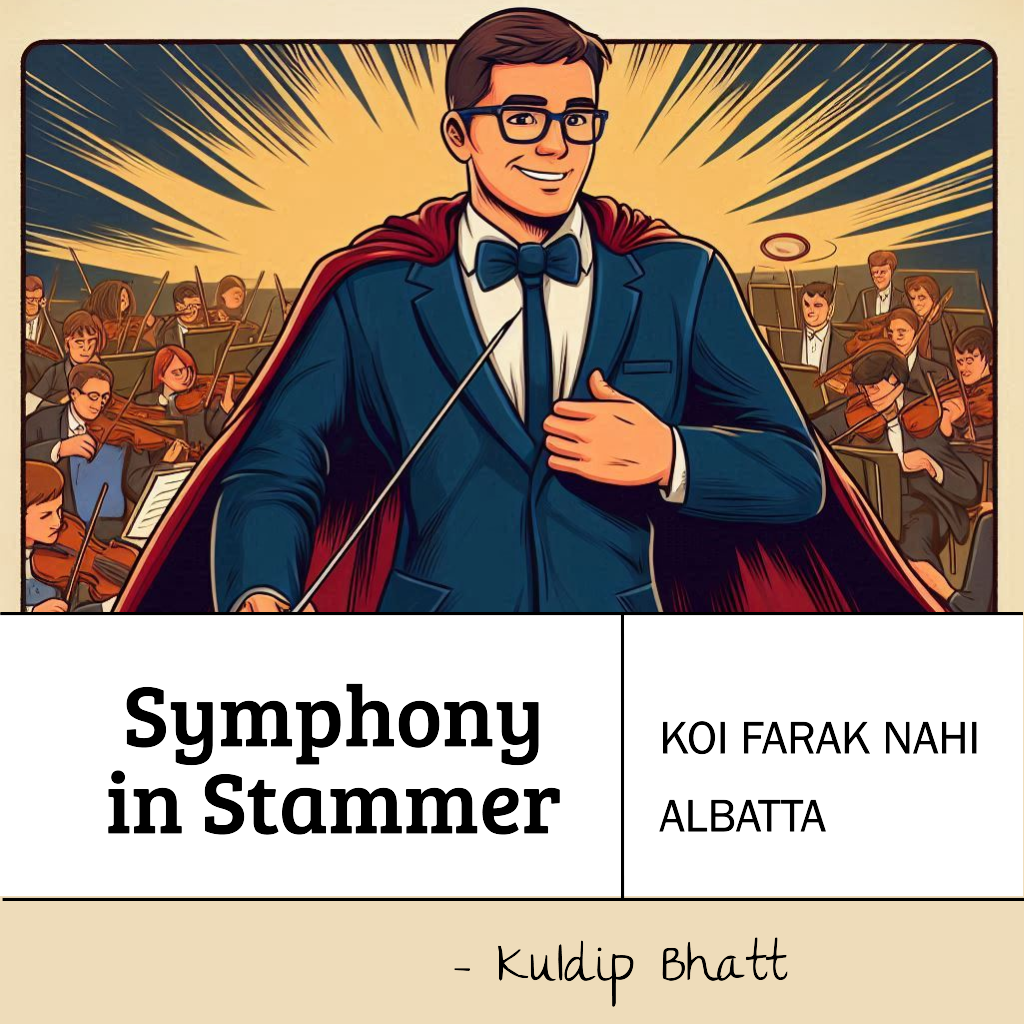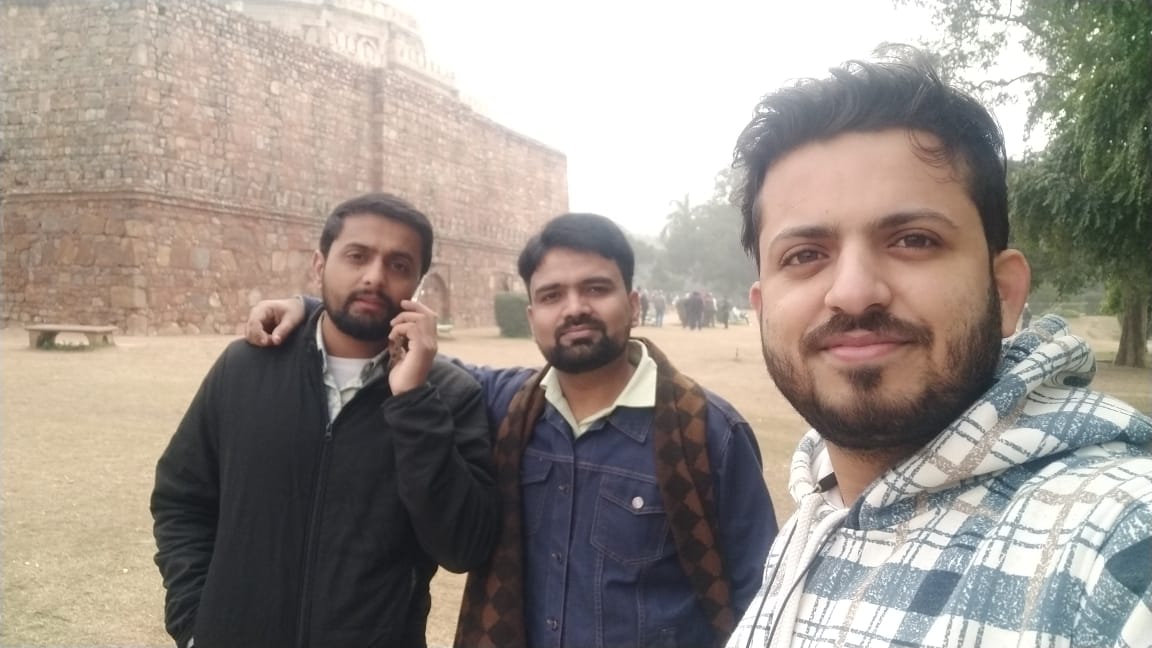
It was a regular Wednesday workday at my IT job, but a milestone evening for me. I had already canceled my students’ evening music classes and asked everyone to meet at the Troy High School auditorium. It was the annual high school symphony orchestra concert night at a Troy School District high school in Michigan, USA. Mrs. Mayes, the orchestra director, was preparing to conduct a team of 75 string instrument players and a melodious chorale of 75 vocalists.
I was about to experience something I could never have imagined. The emcee announced, “And now, the two symphony orchestra pieces scored by Kuldip Bhatt.” The 150 talented musicians were getting ready to play the two music scores I had written from scratch. The first piece was based on Raag Vrindavani Sarang, inspired by my Gujarat Sangeet Natak Academy’s Madhyama curriculum book. The second was “Jeena Yahan, Marna Yahan,” a composition by RK Films and Shankar Jaikishan. The prelude I scored was the very popular RK Films logo music.
Mrs. Mayes lifted the baton, and as the first string note of this melodious symphony orchestra echoed through the auditorium, a great sense of satisfaction washed over me. Composing the music score for this performance was a significant milestone in my journey as a musician and as someone who stammers. The vibrations of strings and vocals filled the room and transported me back to that one life-changing moment in my childhood.
It was a day when everything changed. A seemingly ordinary afternoon during my pre-kindergarten (Bal-Mandir) year took an unexpected turn due to a sudden accident. This incident marked the beginning of my stammering, a challenge that would shape my life in ways I could never have imagined.
The days after the accident were very confusing and frustrating. It was like unknowingly running my head into a pole. Speaking, which had barely begun, already became a big struggle. At first, everyone thought I had lost my voice completely, even the doctors. Then they realized I could still make sounds, but to me, every sound felt stuck in my throat like a heavy stone. Simple conversations became difficult, with repeated sounds and long pauses. The only peaceful moments were either sleeping or avoiding talking to others when awake. Like a permanent bleach stain on a brand new jacket, the stammering problem had become a permanent and unwelcome part of my life, casting a shadow over my childhood and making each day a struggle to get words out smoothly.
A new normal began for me with stammering at the age of 3. It was tough. There were thousands of things happening to me and around me that I simply hated. From loved ones showing excessive sympathy by taking over my conversations, to friends being warned not to engage me too much due to my speech difficulty, and brutal schoolmates who made fun of my stammering, turning me into the center of unwanted attention and amusement.
But I was determined not to focus on failures. I made sure to tightly grasp and nurture even a single optimistic thought that passed through my mind, although I saw no light anywhere regarding how I was going to handle this stammering for the big life ahead of me. Approaching my turn to read a paragraph from the school textbook, knowing my stammering was waiting to erupt, was the worst experience imaginable. I have not felt anything heavier in this life.
But there was one thing I was certain of every morning. I was going to find some hack, some way out of this stammering nonsense, only to realize towards the evening that it was very much a part of me and it was not going to be an overnight fix. I would wake up the next morning, more determined than the day before, to find some sense out of this whole struggle.
I did not know anyone else who stammered like me. Today, India’s stammering community is blessed to have a support framework such as TISA propagating the SHGs everywhere. But at that time, I did not have a single person like me to brainstorm or share with so that we could team up and find a way out.
Then came a bright day when I watched the movie Satte Pe Satta. It was like a life-changing event. I came out of the movie theater, and I finally had it all figured out! The movie helped me realize that my struggle should not be about fixing my speech but about the sound. All this time, I had been trying to fix my destination, not the journey.
The movie had RD Burman’s best soundtrack. The sound dynamics of “Pyaar Hamein Kis Mod Pe Le Aayaa,” from the bass octave all the way through the high-pitched “Dum Hai Toh Unse Chheen Ke Le Aayenge,” were incredible.
The rhythmic waves of sound, from slow tempo to double speed, were steady and regular. When I was speaking with a stammer, I could feel that the rhythm of sound and breathing was very irregular. The journey I embarked on from that day was about developing a calm to improve daily and continually enhance the quality of my sound and life, rather than just focusing on fixing my stammering.
I found my journey. I was no longer worried about how long it would take to reach my destination because I knew it was not an overnight fix. I decided not to focus on when I would get there, but rather to channel my energy into making the most out of the journey. I stopped focusing on fixing my speech and started focusing on sounds and breathing. I took up music learning. With all my Guru’s blessings, including my grand Guruji, Pandit Shri Ronu Majumdar’s blessings, and my recent Gandaa Bandhan sanskaar with him, I am now officially inducted into the Maihar Gharana and have committed to remain a lifelong student of Dhrupad—the Aadi Sangeet, the music of ancient Bhaarat-varsh; what our music was before the invasions (aakraman-kaal).
With all the bumps and bruises along the way, the journey only got more intense and interesting from this point onwards. I am sure each one of you has an amazing stammering superhero story to tell, and I will wait to hear from you. Yesterday has passed, and God keeps giving us a fresh new morning with a ton of possibilities every single day. Each morning is like a blank check. It is one hundred percent up to us to make the best out of our day and wait for another fresh day the very next morning!
As a PWS, I know that I am different, but everyone else is different too. For example, a person of a certain height or weight can perform certain tasks in specific ways. I have a speech disorder and speak differently from others. I focused on improving the quality of my journey by practicing the sounds. Techniques such as deep breathing, chanting, and music practice definitely augment the healing of the speech disorder. Speaking or singing, both are sound production activities. As Shakti Kapoor sings in the Satte Pe Satta song, “Koi farak nahi albatta!” It is not the speech we want to fix; we just want to focus on harmonizing sounds with our life.
~Kuldip Bhatt
The writer, Kuldip Bhatt is originally from Ahmedabad, Gujarat; currently based in Michigan, USA. He is the Co-founder and CTO of an IT consulting company, Vike Technology Solutions, Co-founder of Samvaad MusicGuru Academy and KuberFi,


 As we earlier decided meeting time at 09:30 AM...
As we earlier decided meeting time at 09:30 AM...
2 thoughts on “Symphony in Stammer: Koi Farak Nahi Albatta”
Praneeth Gadari
(July 13, 2024 - 11:09 pm)Truly inspiring Kuldip.
Praveen Acharya
(July 15, 2024 - 10:36 pm)Myself Praveen working as a Group leader Product development at Indomim Ltd since 5.5years and having 10years overall experience in the manufacturing industry.
I have stammering problem since my childhood and i couldn’t able to come out from this issue. Now i am trying to switch Job but couldn’t crack interview as my stammering causes me to get rejected in the interview process.
I have gone through Indian Stammering Association comite through linkdn, hoping i will get some help to resolve my issue.
So i sincerely requesting your support and guidance to get rid out this problem.
Please add me in the telegram activity group. Below is my whatsapp number and i use telegram.
Thanks and regards
Praveen Acharya
974 357 7955